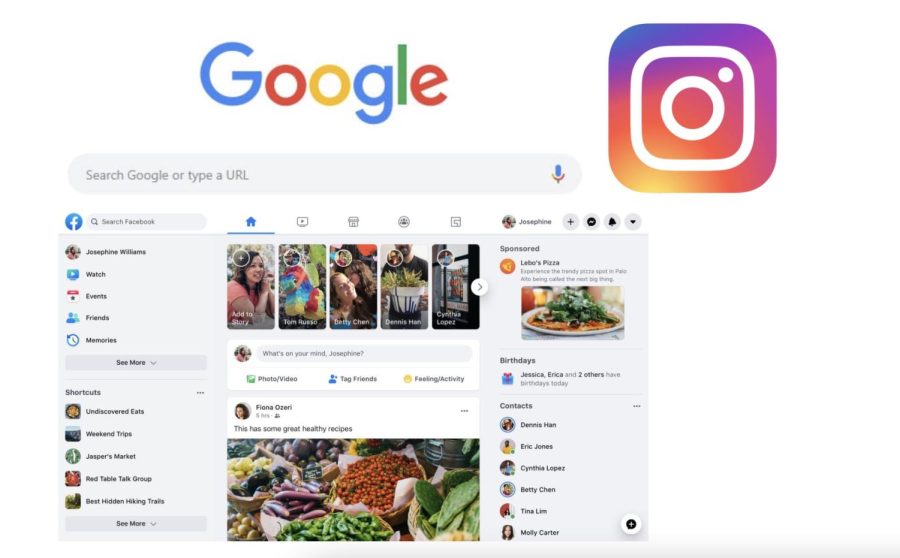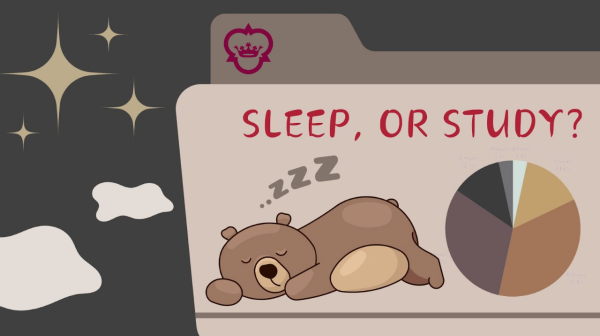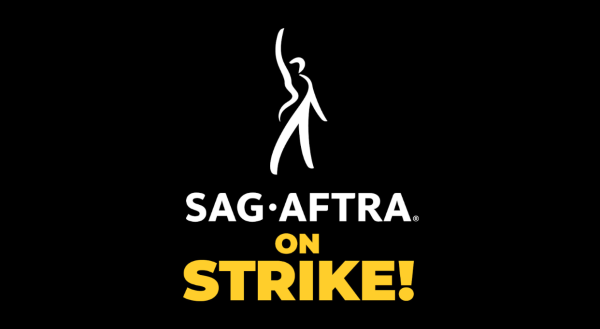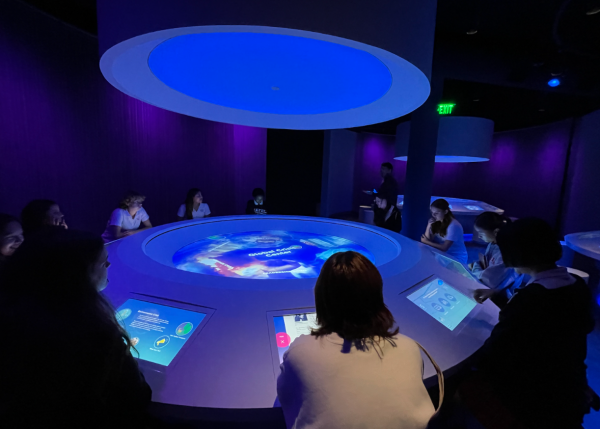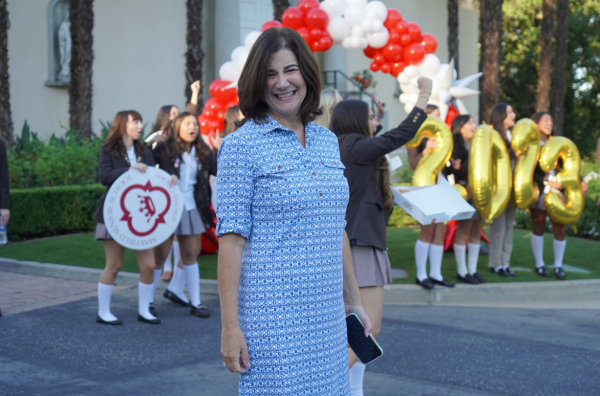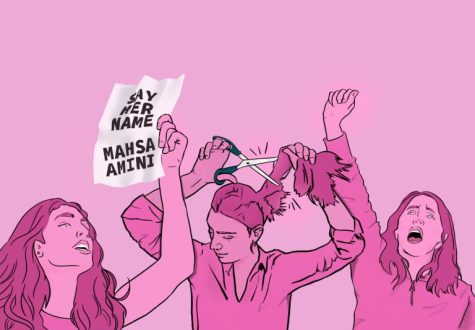Design, Capitalism, Leads to Your Addiction
Screenshot taken by Le Anh Metzger ’22
Screenshot of different social media logos.
Visuals have always played an important role in human nature, from finding what fruits to eat to choosing what websites to use.
Oftentimes visual appeal is the driving force behind our actions. Social media companies such as Facebook, Instagram, Twitter, and Snapchat use aesthetics to attract interaction and to generate more user time.
By incorporating specific colors, contrasts, typography, and shadow, these companies make their sites visually appealing so that users continue to spend time on the site, generating profit for the company.
“The more time we spend on the platform, the more advertising revenue flows into the pockets of tech companies — attention is currency,” wrote Business Insider’s technology reporter Hannah Schwär. “[These companies] deliberately [design] their apps in a way that makes them addictive — behavioral design comes into play here,” Schwär said.
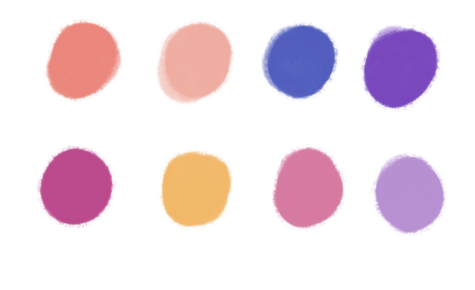
But what are the impacts that aesthetic design actually has on teenage users?
Plenty, says Arianne Rising ’22 a junior at Mayfield Senior School.
“I would rate the importance [of aesthetics] as a 8 [out of 10],” Rising said. I am attracted to aesthetics that match my vibe and turn away from those that are opposite,” Rising said. “I was just debating the other day about what pictures in my camera roll match my insta feed and the aesthetic the already existing photos create and how to match that,” Rising said.
Not everyone agrees that aesthetics are impactful.
“I don’t really view aesthetics as important that often in what products I am using,” said Abigail Beegle, ’23 who rates aesthetics three on a scale of 10 for importance. “If I like an app or a website I will choose to use it despite how it appears,” Beagle said.
Facebook, Instagram, Twitter, Snapchat, and Google all have their appeal, but while the function of a site is still important, aesthetics subconsciously guide our choices, even if that is just an initial reaction to an eye-catching site, or a continual use of a website due to its appealing design.

Le Anh is a senior at Mayfield Senior School. She is thrilled to be on the Crier staff for her first year. She is also ASB Publicity Director, a member...


